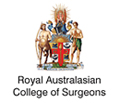Dry Eye Treatment Options
Dry Eye treatment options
- LipiFlow®
LipiFlow is the most revolutionary treatment for Dry Eye, providing comfort to 86% of dry eye patients. Dry Eye is a progressive disease and without treatment it can worsen over time. LipiFlow can treat your dry eye symptoms with its revolutionary technology—that is backed by over 25 years of scientific research. Bring comfort back to your life with LipiFlow. - Lubricants
Lubricants are often a first line treatment for dry eyes. Ideally they should contain minimal or no preservatives and contain electrolytes. They should also be neutral to slightly alkaline in pH.
Preservatives such as benzalkonium chloride (BAK) have been shown to be toxic to the anterior surface of the eye and particularly highly risk of toxicity it those with moderate to severe dry eye. Hence preservative free formulations are absolutely necessary in severe dry eyes.
There are other preservatives in lubricants which may have been reported to be less toxic to the eye but the potential still exists especially for severe dry eyes to find that these preparations can increase irritation symptoms. - Ointments/Gels
Ointments and gels can also be used in the treatment of dry eyes. They can be formulated with a specific mixture of mineral oil and petrolatum. Gels have a longer retention time that lubricants and also less blurring effect compared to ointments. - Punctal Plugs
Punctal plugs are most often divided into absorbable and non absorbable and can be used to successfully improve symptoms of some dry eye patients depending on the cause and results of their dry eye assessment. - Moisture Chamber Spectacles
There are many reports that increasing the humidity can improve dry eyes and there are spectacles that increase the humidity around the eye to improve symptoms of dry eye. There presence of air conditioning and thus a lowering of humidity can cause an increase in symptoms. - Anti-inflammatory Therapy
Disease or dysfunction of the glands that secrete tears can cause changes to the tears composition, conversely, inflammation can cause dysfunction of cells that secrete and/or maintain tears in the eyes. Thus a vicious cycle of inflammation can develop on the surface of the eye and become responsible for symptoms and signs of dry eyes. There are a number of oral and topical medications to control inflammation. - Essential Fatty Acids
Omega 3 fatty acids have been shown to reduce inflammation and have even been shown to benefit rheumatoid arthritis patients. There is also a study that shows essential fatty acids, linoleic acid and gamma – linolenic acid when administered orally twice a day saw significant improvement of symptoms and signs of dry eyes. - Other
There are a number of other treatment modalities and some are still being researched including: secretogogues, serum and surgical interventions. Speak to your Ophthalmologist for these options.










